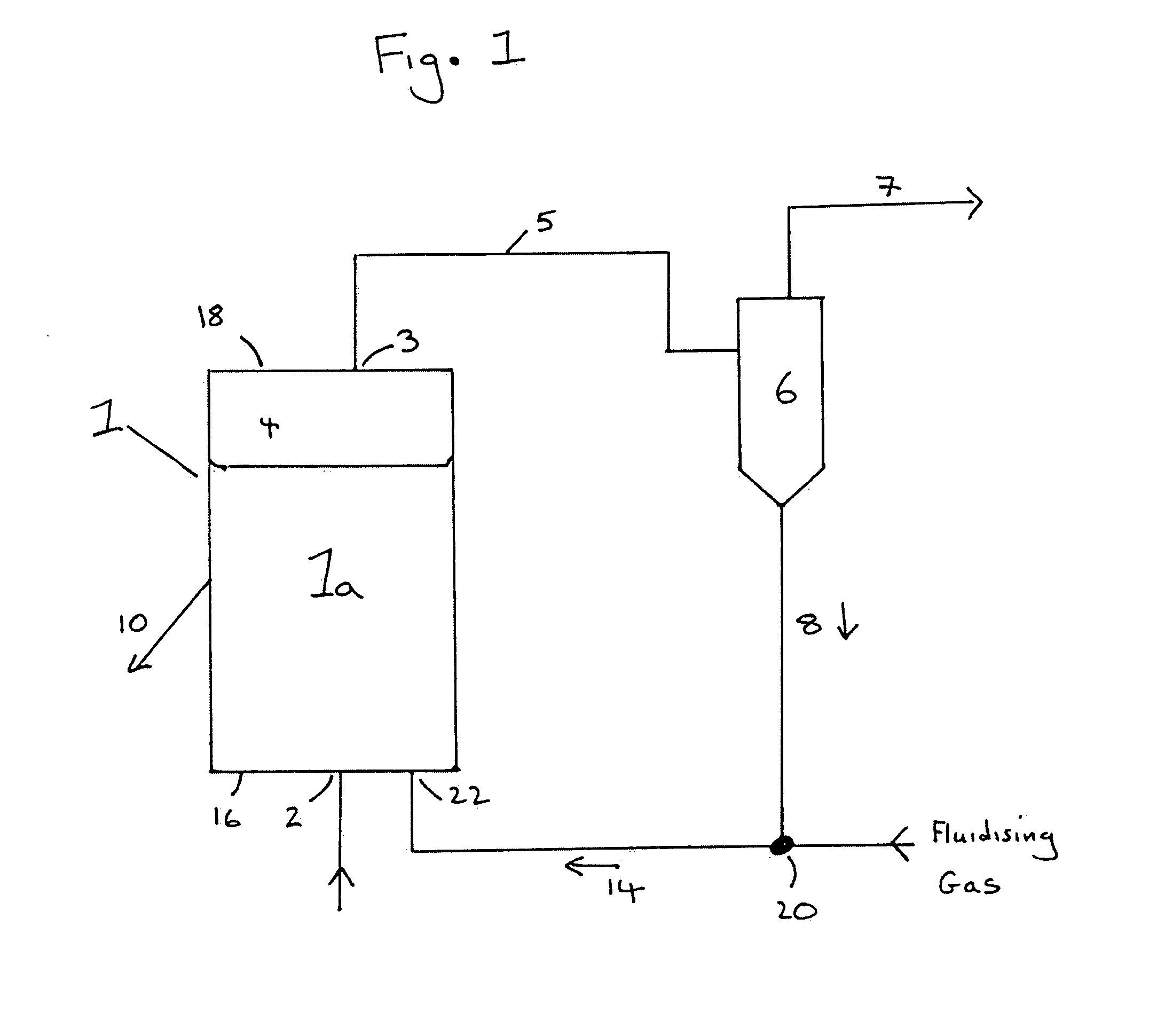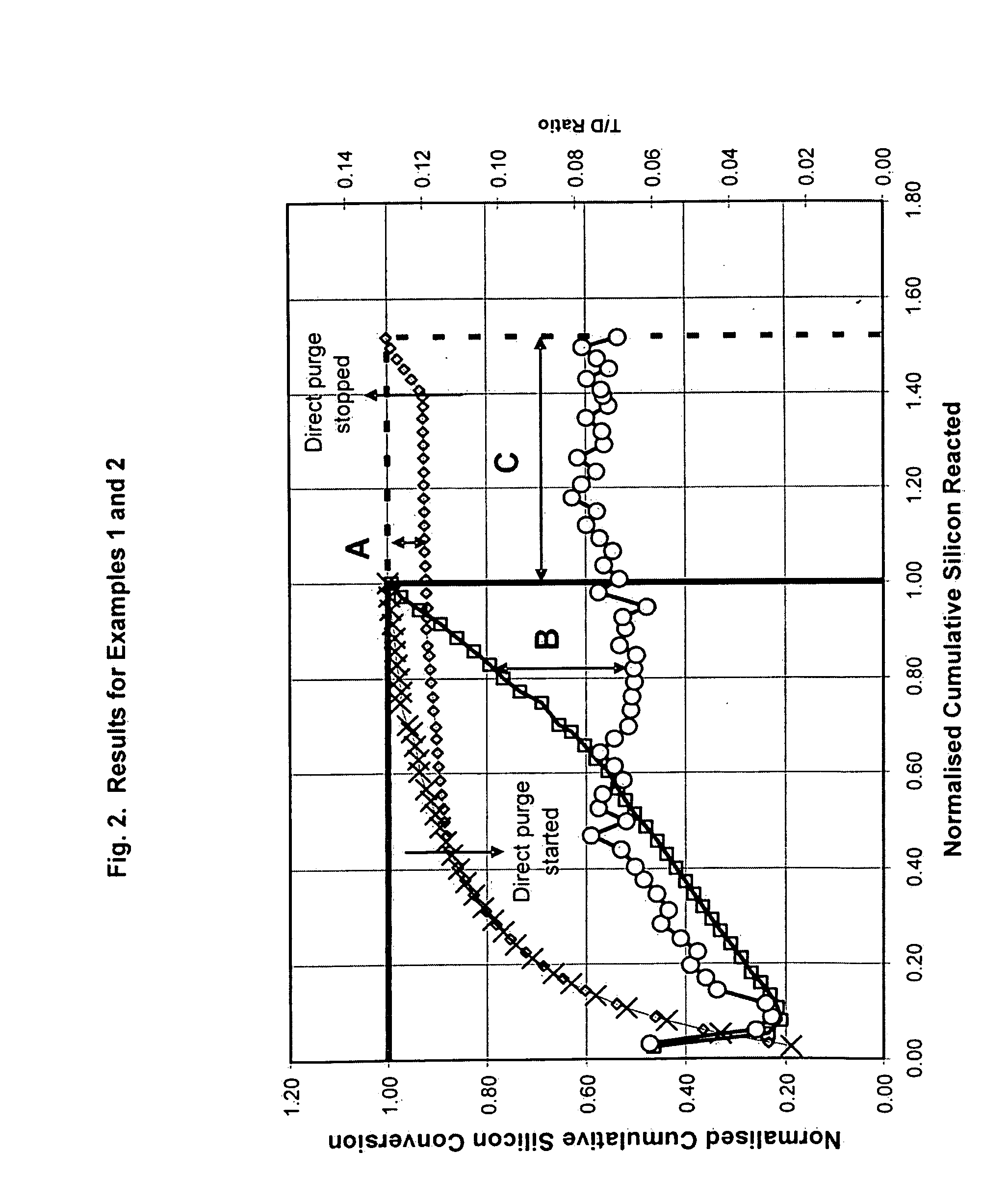Preparation Of Organohalosilanes and Halosilanes
- Summary
- Abstract
- Description
- Claims
- Application Information
AI Technical Summary
Benefits of technology
Problems solved by technology
Method used
Image
Examples
example 2
[0061]The fluidized bed reactor as described in FIG. 1 was used to establish the organochlorosilane synthesis reaction as described in Example 1. However in Example 2 when an amount of comminuted silicon powder had been reacted equivalent to about 45% of the total cumulative silicon metal reacted in Example 1, a continual direct removal of the reactor's contact mass was made at a location beneath the surface of the fluidised bed. The rate of removal of material was controlled to maintain the cumulative silicon conversion at about 92% of the maximum cumulative silicon conversion attained in Example 1. The reactor's inventory of contact mass was maintained by continually replacing the silicon and selected catalysts and promoters which had been removed by the combination of the organochlorosilane synthesis reaction, the contact mass leaving the reactor system due to elutriation and the contact mass leaving the reactor system in the direct removal from beneath the surface of the fluidis...
PUM
| Property | Measurement | Unit |
|---|---|---|
| Temperature | aaaaa | aaaaa |
| Fraction | aaaaa | aaaaa |
| Fraction | aaaaa | aaaaa |
Abstract
Description
Claims
Application Information
 Login to View More
Login to View More - R&D
- Intellectual Property
- Life Sciences
- Materials
- Tech Scout
- Unparalleled Data Quality
- Higher Quality Content
- 60% Fewer Hallucinations
Browse by: Latest US Patents, China's latest patents, Technical Efficacy Thesaurus, Application Domain, Technology Topic, Popular Technical Reports.
© 2025 PatSnap. All rights reserved.Legal|Privacy policy|Modern Slavery Act Transparency Statement|Sitemap|About US| Contact US: help@patsnap.com



